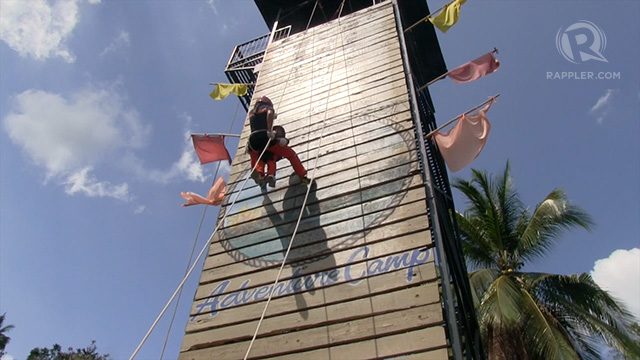SUMMARY
This is AI generated summarization, which may have errors. For context, always refer to the full article.

MANILA, Philippines – A mountaineering group in Tanay leads the way in youth empowerment.
With 230 active members, Tanay Mountaineers is the official disaster response team of the Tanay municipal government.
David Lozada reports.
This 22-year-old regularly trains in disaster response and search and rescue management.
Roxanne Hernandez believes it’s her responsibility.
ROXANNE HERNANDEZ, RESPONDER: Kung hindi natin bibigyan ng pansin yung issue na ito, hindi magiging aware yung mga tao sa epekto nito sa ating bansa. Yung climate change and global warming is trending and controversial so kino-consider natin siya na national threat. (Climate change and global warming are controversial and trending topics nowadays. If we don’t pay attention to this issue, others won’t be aware of its effects on the country.)
Roxanne is a member of the Tanay Mountaineers or TM – a non-governmental organization focused on disaster risk reduction and environmental protection.
The group started as a youth volunteer and mountaineering organization in 1997.
Because of their expertise in rescue, first aid, navigation and survival operations they became the official disaster response team of the Tanay municipal government.
DAVID LOZADA, REPORTING: Tanay is prone to various natural hazards including floods and landslides. To answer the need for better disaster response and mitigation, the local government taps ITS youth to promote disaster resiliency and climate change adaptation in the different barangays.
Tanay lacks high-tech disaster response equipment.
But the local government invests in community-level preparedness and mitigation, tapping TM and the youth for these efforts.
Tanay DRRM chief and TM founding chairman Carlos Inofre says the partnership between the local government and civil society is key.
CARLOS INOFRE, TM FOUNDING CHAIRMAN: I-utilize nila yung mga NGO sa area kasi dito namin effectively na-train yung communities down to the household level. We combine our resources kaya sa tingin namin disaster resilient na yung Tanay.
(LGUs should utilize local NGOs in their area effectively to train communities in disaster preparedness down to the household level. We combined our resources to make Tanay resilient.)
TM trained the town’s 20 barangays and local law enforcers in responding to multiple hazards.
Most of TM’s operations are run by its young members.
HERNANDEZ: Yung youth kasi yan yung mas may time. Yan yung mas may capacity in terms of physical, mental and intellectual capacity. Yung youth yung mas mata-tap natin nowadays para maging aware yung community paginating sa mga ganitong issues.
(It’s the youth who has the time. They have the physical and mental capacity to understand disaster risk reduction and management. We can easily tap them to make their communities aware of the issues they face.)
Tanay’s example shows… the lack of equipment and budget need not cost lives.
and that community preparedness is the best way to adapt to disasters.
Tanay Mountaineers will keep training the next generation of Filipino life savers…
hoping to see a more disaster resilient Philippines
David Lozada, Rappler, Tanay Rizal.
– Rappler.com
Have a good story to tell about a group or individual involved in disaster preparedness and response education? Email us at move.ph@rappler.com.
The research for this case study was supported by the Friedrich Naumann Foundation for Freedom.
Check out the other case studies here:
- Tanay Mountaineers: A model of youth empowerment
- San Francisco: The island where all survived
- VIDEO REPORT: Disaster risk reduction in Camotes: The Purok system
- Pasig City: Learning from Ondoy, ready for the rain
- VIDEO REPORT: Pasig modernizes disaster management

Add a comment
How does this make you feel?
There are no comments yet. Add your comment to start the conversation.